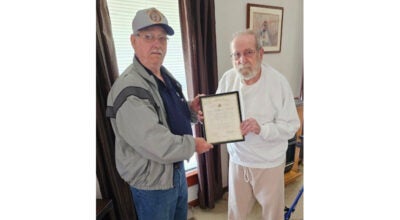Protecting student athletes
Published 8:25 am Friday, September 17, 2010
COURTLAND—Southampton High School has tested most of its fall athletes using a computerized concussion impact testing system and plans to test the remainder soon.
SHS Principal Allene Atkinson said the school has subscribed to the ImPACT test, which stands for Immediate Post-Concussion Assessment and Cognitive Testing, in preparation for future requirements by the state.
“There’s a new push by the Virginia High School League, and the state of Virginia, on concussion management,” Atkinson said. “We have subscribed to computerized, neurocognitive test that is basically a way to provide some baseline data.
“If a child were to have a concussion, then they could be given another test within a few days. It gives a medical physician something to compare to and help determine when the child is able to return to play.”
Atkinson said the school’s subscription to the testing system costs $500 a year and is used by professional athletes, colleges and some high schools around the country.
“The subscription is pretty nominal,” the principal said. “It’s a very minimal charge for another tool to help keep our athletes healthy.”
She said most fall athletes, including those participating in football, volleyball, cross-country and cheerleading, have taken the test already. Students take the test in the school’s computer lab, and it takes between 15 and 20 minutes.
“The test goes through a series of screens that measures a person’s memory, attention, reaction time, mental speed and verbal memory,” Atkinson said.
“I took the test. I feel like my reaction times must have been slow,” she noted. “But I understood what it does. Obviously, if I had a head injury, I would have been slower and I might not have been able to remember as much. But without that, a physician doesn’t know how the child processed information prior to the injury.”
Atkinson added that the “real beauty” of the testing system was for recurring concussions.
“We will be able to deal with those much quicker,” she said. “Sometimes a kid will have an injury that doesn’t appear serious. The doctors will be able to compare baseline data on that so we’ll be able to work with the child better.
“It doesn’t prevent anything, but it’s another tool to helping concussion management.”
Division superintendent Charles Turner said the state would require guidelines for concussion systems and for students suffering concussions during games.
“They’re supposed to come out with guidelines by July 1,” Turner said. “But our people have already moved forward on that, and we have a system in place now.”
Littleton Parker, who serves as the athletic director and assistant principal for SHS, said that, to his knowledge, only one or two students had been diagnosed with a concussion in the last five or six years.
“When a kid gets a big hit, suffers some kind of injury or gets knocked out, we have been very, very cautious about that and have the kid checked,” Parker said. “Football will probably be your biggest (sport to cause concussions), but field hockey is kind of dangerous; a kid could get hit with a high stick. Sometimes basketball could be (dangerous), a kid going up for a rebound, blocked shot, heads hit each other or hit the floor. It could happen there.
“But we haven’t had those types of injuries.”
Parker said all fall athletes, with the exception of the golf team, had been tested within the last two weeks. He said the school planned to test the golf team in the near future, and would eventually test all of the athletes from all sports seasons.
“We’ve found it to be very valuable to our athletes and we plan to test all of them,” Parker said. “We’re very pleased to have the system. We want to do what’s best for the kids, we’ve got to protect them.”





